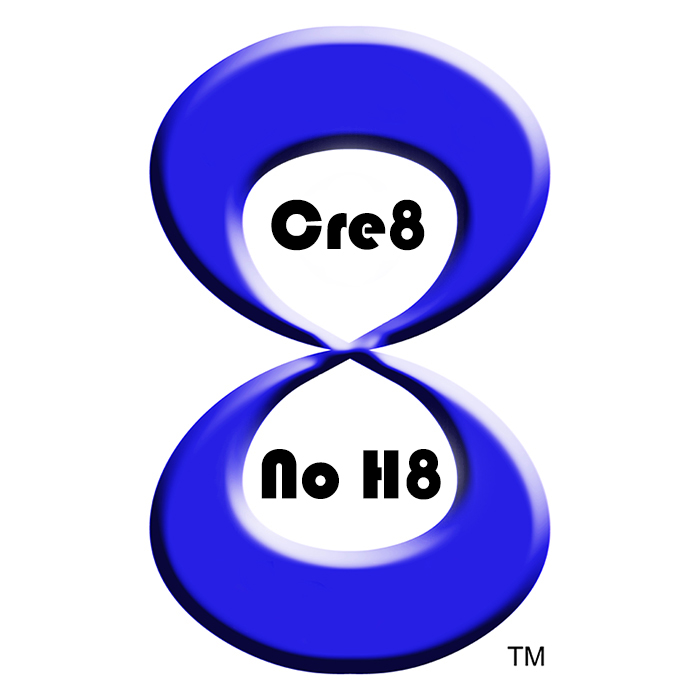Donate & Coordinate Masks
ProjectN95.org Institutional Suppliers of Official PPE connect to Medical Workers
Protect A Nurse Project https://protectanurse.com/. Find your local hospital or nursing home with specific needs & contact info.
Masks For Docs https://masksfordocs.com
SMALL DONATIONS
Direct Requests from Medical Facilities to AskForMasks.com HERE https://asksformasks.com/
Collecting Sanitizer, Wipes, PPE, Masks, etc., Check Your Local Area
Get Us PPE #GetUsPPE https://getusppe.org/
Request PPE HERE DONATE LOCALLY HERE
MAKE PPE HERE–3D Printing, CNC Manufacturing, Rapid Prototyping, Injection molding and Laser printing, Sewing & Textiles
Mask-Match.com https://www.mask-match.com/ Requests placed on a list, donations given from list, live updates for masks delivered, shipped, and being made. USPS postage paid Direct To Healthcare Worker.
- Mask Donation of N95, P95, R95, Surgical Masks & Homemade Masks
- Healthcare Workers Sign Up To Receive Masks
VOLUNTEER COORDINATION
Relief Crafters of America https://www.facebook.com/groups/reliefcraftersofamerica/
Sewing For Lives based in Utah https://www.facebook.com/groups/Sewingforlives/
- Health Care Workers in Need Request Here: https://docs.google.com/forms/d/e/1FAIpQLSdifCxiu73nxO6vMRBBAJdyM0osc662y13MAYcW8cLFVfZv_Q/viewform
Seal a Surgical Mask with 3 Rubber Bands https://youtu.be/CVjGCPfRwUo
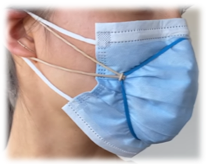
Homemade Masks
Extensive List that Rates Homemade DIY Masks
BOIL FABRIC FIRST! It shrinks it & sterilizes. Wash & Sanitize before distribution. Don’t count on recipient to have the time to do so before first wear. Package each with size, style, and fabric contents individually on outside of package for effective distribution.
MASK MATERIAL
This site sells medical fabric normally. If Trump issues a Federal Defense Protection Act, they would easily be reopened for manufacture and distribution. They have great information here: https://www.wazoodle.com/blog/face-mask-fabrics/. Smart Air Filters.com See more under Research, below.
POLYPROPOLENE NON-WOVEN
“{29th March 2020 Update:} Expert recommended that use Non-Woven Polypropylene (NWPP) as the material to sew for the face mask. Oly-Fun fabric is a non-woven polypropylene material where re-use grocery bags or event bags are made from. Perhaps it is a great alternative to sew instead of cotton. However, please check if it is washable at high temperatures for sanitization and whether if they can last for repeated washing.”
Fitted Pattern with Nose Wire and Filter Pocket Here: https://www.craftpassion.com/face-mask-sewing-pattern/#face-mask-video
Pleated surgical mask from polypropylene non-woven tote bags sewing machine https://www.youtube.com/watch?v=Qitr7Wl4aeo
No-Sew Pleated surgical mask from polypropylene non-woven tote bag using hot glue gun: https://www.youtube.com/watch?v=Qitr7Wl4aeo
Maker Mask
Polypropylene Tote Bag Fabric to Protect PPE Connects Makers to Medical Community
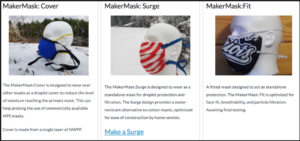
“MakerMask.org is a source for science-based mask designs for community makers to combat the spread of COVID-19. It is important that we use the best information possible to help protect ourselves and our communities. The MakerMask designs use latex-free, water-resistant materials that are likely to provide improved protection over cotton and elastic….
Fabric Ties. 18” advised for general use: Bias Tape [fold in ½ and sew to finish the edge], Grosgrain Ribbon, Shoelaces, Strips of NWPP, Machine Washable other findings.
“Elastic may cause severe reactions in individuals with a latex allergy, does not generally hold up as well to the heat of sterilization, [irritates the ears], and therefore should not be used.” MakerMask is a science-driven project led by Dr. Jocelyn Songer, a biomedical engineer with a decade of experience using and researching respirators and masks. During the COVID-19 pandemic, Dr. Songer has devoted herself full time to creating and testing designs for the safest, most-effective masks from commonly available materials, and to closing the gap during the global shortage of PPE. This work has been deeply informed by scientific literature, rigorous testing, and expert reviews. We are actively monitoring this rapidly evolving field and aim to continue providing the best information available.”
HEPA VACUUM BAG
A Doctor explains how to make a mask using a Hoover HEPA Y filter vacuum bag to cut 4 masks sewn by machine using pipe cleaners, hot glue gun, and elastic. https://www.youtube.com/watch?v=W6d3twpHwis
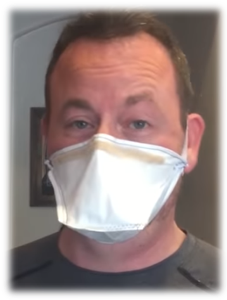
Mask Prototype 2 – University of Florida Dept. of Anesthesiology
The mask has passed the Respirator Fit Test. Please note that the masks will be sterilized after they are returned to the hospital.
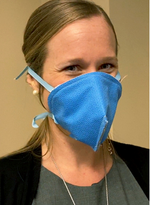
Download a pdf of these instructions
“2 layers of HALYARD H600 medical fabric [sold out/expensive, an issue]. It has a roundish shape and darts to snug the mask under the chin. There is no binding on this mask. The raw edges are topstitched after insertion of the nose wire and attachment of the ties.”
Supplies Cut 2 pieces 10” x 6.5”; Cut 4 pieces 1” x 20” (these are for the ties)
EASY FACE MASK in 1 MINUTE – NO SEWING! WASHABLE, REUSABLE FACE MASK [XS-XXL] Filter: Electrostatic filter for HVAC, AC & Microdust, PM 2.5 carbon filter or Meltblown filter includes links to Korean vendors https://www.youtube.com/watch?v=lOe_8z8k01U&feature
FABRIC
The two basic styles of masks are pleated like the average surgical masks and fitted.
Fitted Fabric
Nurses and doctors have argued for fitted masks with a wire nose piece to seal. This pattern has been modified per user feedback to include a pocket for the filter media. The video includes updates for a sleeve on the top edge of the face mask for a removal nose wire, and a cotton shoelace as the head tie, as shown in the picture below. Excellent Directions. https://www.craftpassion.com/face-mask-sewing-pattern/#face-mask-video
Materials
- Main Fabric (cotton), 13″ x 7″, prewash
- Lining Fabric (cotton or flannel), 12″ x 7″, prewash
- Bias Tape, 2″ wide 6″ long, prewash (Optional, as nose wire sleeve)
- Nose wire, 6″ (Optional: Pipe Cleaners, 4” Twist Ties, Strips of foil baking pan)
- Head Tie: Best: shoelace/ribbon/cord with at least 44″ length for the head tie, or Elastic Cord for ear loops 16″
- Face Mask Sewing Patterns; Choose your option to download and print separately
-
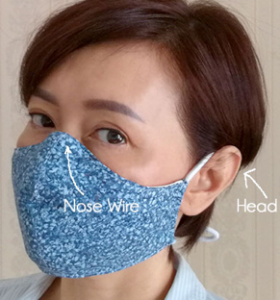
Fitted Face Mask with Filter Pocket & Nose Wire https://www.youtube.com/watch?v=W6d3twpHwis 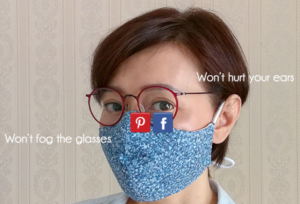
Fitted Face Mask with Filter Pocket & Nose Wire https://www.youtube.com/watch?v=W6d3twpHwis
https://www.craftpassion.com/face-mask-sewing-pattern/#face-mask-video
Pleated Fabric Surgical Masks
Masks Now Coalition. #MasksNow https://masksnow.org/
Connecting Sewers, Helpers, and Facilities in Need of:
Gowns, Gloves, N95 Respirators, Surgical Masks, Protective Goggles, Face Shields, Disinfectant Wipes
“We are in discussions to partner with the CDC for the 3-Layer Mask pattern. This pattern requires the use of a midweight/lightweight non-woven polyester material” 3 Layer Pattern Patterns for sewing fabric pleated masks using INTERFACING: Pellon 830 Easy Pattern, Pellon 40 Midweight Stabilizer, Pellon 30 Lightweight Stabilizer, Pellon 810 If you do not have access to this material, you may use the Pocket pattern as a backup, with a hidden pocket to enclose filter from materials such as HEPA filter vacuum bags without fiberglass, non-woven non-fusible interfacing, triple layer paper towels, and coffee filters.” https://masksnow.org/
No-Sew Pleated Fabric, rubber bands, fabric glue, iron YouTube: Belinda’s DIY’s https://www.youtube.com/watch?time_continue=14&v=ha6xEjnXO34&feature
Desperate Measures
Plastic bottle Face Shield: https://www.youtube.com/watch?v=YUi2_AwDnqE
No-Sew Tee-Shirt Mask https://www.youtube.com/watch?v=VqHHViHKfrg&feature=youtu.be
Tie Scarf or bandana: YouTube: DIY Nikol & Alexandra https://youtu.be/ieI7HITRm3chttps://www.youtube.com/watch?v=b6ADNMFRzIM
Mask from sanitary napkin: https://www.youtube.com/watch?v=Agh8KTbpaSY
Mask from toilet paper: https://www.youtube.com/watch?v=8F4FVZAFAjs
Mask from paper towel or scarf & 2 elastic hair ties: https://www.youtube.com/watch?v=wRNjCP9OqW0&feature=youtu.be
Paper Towel: https://www.youtube.com/watch?v=u9MnDsUyYAA
Bra & coffee filters filled with citric acid https://www.youtube.com/watch?v=Dy59oQArwXI
#Masks4All
Introducing #Masks4All by Petr Ludwig (3 minute video)
We need #masks4all, Jeremy Howard
How to make a mask from a t-shirt by Jeremy Howard (12 minute video).
#Masks4All Living Document with Information, Instructions, and Links to 48 Research articles
https://docs.google.com/document/d/1HLrm0pqBN_5bdyysOeoOBX4pt4oFDBhsC_jpblXpNtQ/edit
Research
MATERIAL RESEARCH
Medical-Grade Fabric: https://www.wazoodle.com/face-mask-fabrics.html Wholesale only
Smart Air Filters.com “Update 4th April: This article has had a huge number of hits from people looking for the best face mask material. The list of materials here is not complete. We are now working hard to test MORE face mask materials for you. In the meantime, please don’t ask us to test any more materials! Sign up for the Smart Air newsletter (bottom of page) or follow the Smart Air Facebook to get notified when we publish the updated data.
Bottom line: Test data shows that the best choices for DIY masks are cotton t-shirts, pillowcases, or other cotton materials. These materials filter out approximately 50% of 0.2 micron particles, similar in size to the coronavirus. They are also as easy to breathe through as surgical masks, which makes them more comfortable enough to wear for several hours. Doubling the layers of material for your DIY mask gives a very small increase in filtration effectiveness, but makes the mask much more difficult to breathe through.”
DIY Masks: Is Paper Towel Effective at Blocking Viruses? Smart Air By Paddy Robertson March 8, 2020 “The coronavirus measures approximately 0.1 microns in diameter, so 3 times smaller than measured in our test. However, 0.3 microns is an important size to test, because 0.3 micron particles are the most difficult to capture. The results weren’t great. A single layer of kitchen paper captured just 23% particles. Adding an extra layer only increased particle capture to 33%. Bottom line: Paper towel captured fewer particles than other DIY mask materials tested by researchers at Cambridge. However, if it is the only material you have, it is better than nothing.” https://smartairfilters.com/en/blog/paper-towel-effective-against-viruses-diy-mask/
A cluster randomised trial of cloth masks compared with medical masks in healthcare workers. “Penetration of cloth masks by particles was almost 97% and medical masks 44%.” https://www.ncbi.nlm.nih.gov/pmc/articles/PMC4420971/?fbclid=IwAR3VsVNjUOXZgeqXveEzB27ucEMZlscbLy21hCcq8XR9o9oqQNcm-2_GCbk
Davies, A., Thompson, K.-A., Giri, K., Kafatos, G., Walker, J., & Bennett, A. (2013). Testing the Efficacy of Homemade Masks: Would They Protect in an Influenza Pandemic? Disaster medicine and public health preparedness, 7, 413-418. doi:10.1017/dmp.2013.43. https://www.researchgate.net/publication/258525804_Testing_the_Efficacy_of_Homemade_Masks_Would_They_Protect_in_an_Influenza_Pandemic#pf7
Everyone Thinks They’re Right About Masks The Atlantic How the coronavirus travels through the air has become one of the most divisive debates in this pandemic. Ed Yong April 1, 2020 https://www.theatlantic.com/health/archive/2020/04/coronavirus-pandemic-airborne-go-outside-masks/609235/?utm_source=pocket-newtab
“Lydia Bourouiba of MIT, for instance, has shown that exhalations, sneezes, and coughs unleash swirling, fast-moving clouds of both droplets and aerosols, which travel many meters farther than older studies predicted. Both kinds of glob also matter over shorter distances: Someone standing next to a person with COVID-19 is more likely to be splashed by droplets and to inhale aerosols. The question, then, isn’t whether the coronavirus is “airborne” in the tediously academic way the word has been defined. As the journalist Roxanne Khamsi puts it, the virus is “definitely borne by air.”
[Bourouiba, L. (2020). Turbulent Gas Clouds and Respiratory Pathogen Emissions. JAMA. doi:10.1001/jama.2020.4756]
“One team of researchers blasted virus-laden fluids into a rotating cylinder to create a cloud of aerosols. They found that the virus remained stable for several hours within that cloud, raising fears about its ability to persist in ambient air. “
[van Doremalen, N. Aerosol and Surface Stability of SARS-CoV-2 as Compared with SARS-CoV-1. New England Journal of Medicine. doi:10.1056/NEJMc2004973
https://www.nejm.org/doi/10.1056/NEJMc2004973]
[How Long Will Coronavirus Live on Surfaces or in the Air Around You? The New York Times A new study could have implications for how the general public and health care workers try to avoid transmission of the virus. By Apoorva Mandavilli Published March 17, 2020Updated April 1, 2020 https://nyti.ms/3daUa9J ]
“But as the researchers have noted, the study’s experimental setup was artificial. It doesn’t reflect “what’s occurring when you’re just walking down the street,” says Saskia Popescu of George Mason University, who specializes in infection control and who was not involved in the study.”
“A second study suggests that the coronavirus can be released into the air in less dramatic ways. Joshua Santarpia and his colleagues at the University of Nebraska Medical Center found traces of the coronavirus’s RNA—its genetic material—in rooms occupied by a total of 13 COVID-19 patients, most of whom had only mild symptoms. The RNA was on obvious places such as bed rails and toilets, but also on harder-to-reach spots such as ventilation grates, window ledges, and the floors beneath the beds. The RNA even lingered in the air; using air-samplers, the team detected viral RNA floating more than six feet away from the patients, and even in the hallways just outside the patients’ rooms. This isn’t necessarily cause for alarm. Finding viral RNA is like finding a fingerprint at a crime scene—the culprit was once there, but might be long gone. So far, the Nebraska team has failed to detect live, infectious virus in its air samples” (The Atlantic)
[Santarpia, J. L., Rivera, D. N., Herrera, V., Morwitzer, M. J., Creager, H., Santarpia, G. W., . . . Lowe, J. J. Transmission Potential of SARS-CoV-2 in Viral Shedding Observed at the University of Nebraska Medical Center doi:10.1101/2020.03.23.20039446v2]
- A review of masks
- Face Masks: Much More Than You Wanted To Know
- Collection of Mask Research
- List of citations
- Can physical interventions help reduce the spread of respiratory viruses? – Burch, Jane – 2020
- COVID-19: Why we should all wear masks — There is new scientific rationale
- Curve Crushers: Killing Coronavirus
